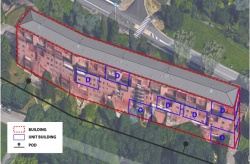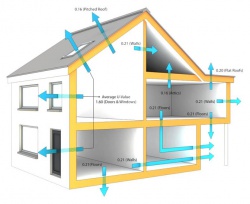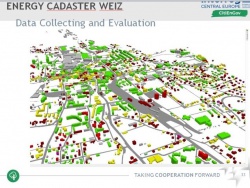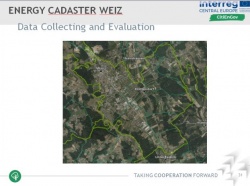Difference between revisions of "Best practices (buildings)"
(→Energy management system in the city of Ferrara) |
(→List of best practices) |
||
| Line 7: | Line 7: | ||
== Energy management system in the city of Ferrara == | == Energy management system in the city of Ferrara == | ||
'''Location''' | '''Location''' | ||
| + | |||
Municipality of Ferrara, Italy | Municipality of Ferrara, Italy | ||
'''Description''' | '''Description''' | ||
| + | |||
Municipality of Ferrara showed the use of data at municipal level for implementation of energy strategies. The importance of energy data is linked to urban planning and environment, especially to specific actions, from refurbishment of public buildings to planning and monitoring activities. Collected energy data and software can used to match planning needs and public administration processes, enabling a better energy performance in a medium/long-term period. | Municipality of Ferrara showed the use of data at municipal level for implementation of energy strategies. The importance of energy data is linked to urban planning and environment, especially to specific actions, from refurbishment of public buildings to planning and monitoring activities. Collected energy data and software can used to match planning needs and public administration processes, enabling a better energy performance in a medium/long-term period. | ||
The images show collection and harmonization of data at local level. Collection of energy data in buildings and spatial information like shape, height, number of units, volume, age, type, energy consumption, heating system types. | The images show collection and harmonization of data at local level. Collection of energy data in buildings and spatial information like shape, height, number of units, volume, age, type, energy consumption, heating system types. | ||
| + | {| class="wikitable" | ||
| + | | [[File:Buildings_01_Municipality_Ferrara_1.jpg|250px]] | ||
| + | | [[File:Buildings_01_Municipality_Ferrara_2.jpg|250px]] | ||
| + | |} | ||
| − | + | ''' Link and contacts''' | |
| + | http://rubrica.comune.fe.it/front_office/office_view/2 | ||
| − | |||
| − | |||
| − | |||
| − | |||
== Energy management system in the city of Weiz == | == Energy management system in the city of Weiz == | ||
'''Location''' | '''Location''' | ||
| + | |||
City of Weiz, Austria | City of Weiz, Austria | ||
'''Description''' | '''Description''' | ||
| + | |||
Working consequently on energy issues and having energy data at municipal level is what Weiz has set up to do. The city of Weiz has decided to work with real data based on the size of the city of having about 11.300 inhabitants and about 450 energy supplied buildings. Having a good energy data basis is a result of (1) a survey of private households in the year 2013-2014, (2) the adjustment of this field research with existing data in the municipality and (3) the adjustment with statistics. The main challenge regarding energy management are (1) keeping the level of data quality (actualizing the data), (2) harmonizing them with existing data of the municipality (different tools and data basis) and (3) identifying/developing the “right” tool that could include future issues. | Working consequently on energy issues and having energy data at municipal level is what Weiz has set up to do. The city of Weiz has decided to work with real data based on the size of the city of having about 11.300 inhabitants and about 450 energy supplied buildings. Having a good energy data basis is a result of (1) a survey of private households in the year 2013-2014, (2) the adjustment of this field research with existing data in the municipality and (3) the adjustment with statistics. The main challenge regarding energy management are (1) keeping the level of data quality (actualizing the data), (2) harmonizing them with existing data of the municipality (different tools and data basis) and (3) identifying/developing the “right” tool that could include future issues. | ||
| − | [[File:Buildings_02_Weiz_1.jpg|250px]] [[File:Buildings_02_Weiz_2.jpg|250px]] | + | {| class="wikitable" |
| + | | [[File:Buildings_02_Weiz_1.jpg|250px]] | ||
| + | | [[File:Buildings_02_Weiz_2.jpg|250px]] | ||
| + | |} | ||
| + | |||
| + | ''' Link and contacts''' | ||
http://www.weiz.at/ | http://www.weiz.at/ | ||
| + | |||
| + | = Conclusions = | ||
| + | xxxxxxxx | ||
= Conclusions = | = Conclusions = | ||
aaaa | aaaa | ||
Revision as of 21:27, 30 January 2018
Contents
[hide]Introduction
This page contains ...
List of best practices
Energy management system in the city of Ferrara
Location
Municipality of Ferrara, Italy
Description
Municipality of Ferrara showed the use of data at municipal level for implementation of energy strategies. The importance of energy data is linked to urban planning and environment, especially to specific actions, from refurbishment of public buildings to planning and monitoring activities. Collected energy data and software can used to match planning needs and public administration processes, enabling a better energy performance in a medium/long-term period. The images show collection and harmonization of data at local level. Collection of energy data in buildings and spatial information like shape, height, number of units, volume, age, type, energy consumption, heating system types.

|

|
Link and contacts
http://rubrica.comune.fe.it/front_office/office_view/2
Energy management system in the city of Weiz
Location
City of Weiz, Austria
Description
Working consequently on energy issues and having energy data at municipal level is what Weiz has set up to do. The city of Weiz has decided to work with real data based on the size of the city of having about 11.300 inhabitants and about 450 energy supplied buildings. Having a good energy data basis is a result of (1) a survey of private households in the year 2013-2014, (2) the adjustment of this field research with existing data in the municipality and (3) the adjustment with statistics. The main challenge regarding energy management are (1) keeping the level of data quality (actualizing the data), (2) harmonizing them with existing data of the municipality (different tools and data basis) and (3) identifying/developing the “right” tool that could include future issues.

|

|
Link and contacts
Conclusions
xxxxxxxx
Conclusions
aaaa